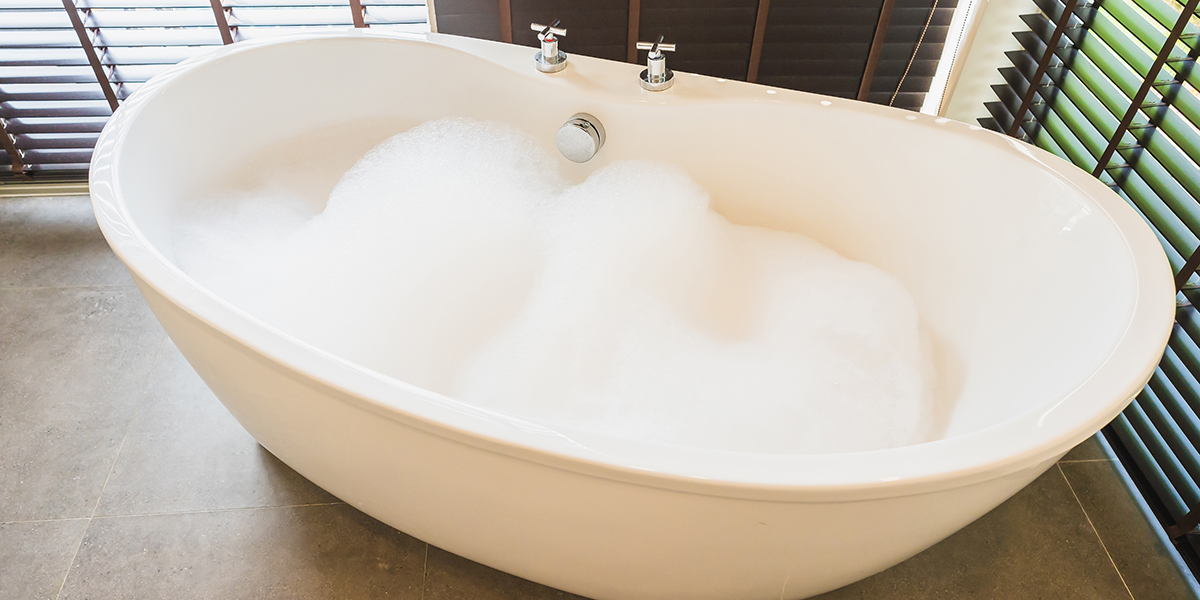Our Comprehensive Guide: Drainage Rising Through the Bathtub
Our Comprehensive Guide: Drainage Rising Through the Bathtub
Blog Article
What are your thoughts on Why is There Sewage Coming Up Through the Bathtub?

Sewer backup in the bath tub can be a traumatic and unsanitary trouble for any kind of property owner. Not just is it bothersome, but it also presents serious wellness risks and shows underlying issues with the plumbing system. Recognizing why sewer is coming up through the bathtub is crucial for taking ideal action to address the issue successfully.
Introduction to the Problem
Typical Factors for Sewage Back-up
Blockages in the Sewage System Line
Among the most usual sources of sewer backup is an obstruction in the sewer line. This can happen because of the buildup of debris, oil, or foreign items in the pipelines, avoiding correct circulation and triggering sewage to support right into your tub.
Tree Origin Breach
Tree origins looking for wetness and nutrients can infiltrate sewer lines through small splits or joints. Over time, these roots can grow and broaden, triggering considerable damage to the pipes and bring about sewer back-up problems.
Understanding the Issue
When sewage starts backing up right into the tub, it's a clear sign of an issue with the water drainage system. The wastewater that must be flowing far from your home is instead finding its way back right into your home, which can result in considerable damage and health hazards.
Prospective Reasons
A number of variables can contribute to sewer back-up in the bathtub. From clogs in the drain line to issues with the plumbing framework, identifying the source is necessary for discovering an option.
Aging Infrastructure
Older homes might have obsoleted plumbing systems that are much more at risk to deterioration, splits, and wear and tear. As pipelines age, they become extra vulnerable to leaks and clogs, increasing the possibility of sewage back-up occurrences.
Heavy Rainfall or Flooding
Throughout durations of heavy rainfall or flooding, the sewer system might become overwhelmed with excess water, causing back-ups and overflows. This can result in sewer supporting into bath tubs and other fixtures inside the home.
Signs of Sewer Backup
Foul Odors
Undesirable smells emanating from drains or fixtures, especially in the restroom, might suggest sewer backup problems. These odors are frequently strong and relentless, signaling a trouble that calls for immediate attention.
Slow Draining Fixtures
Tubs, sinks, and bathrooms that drain pipes slowly or otherwise in all could be experiencing sewage backup. If several fixtures are influenced concurrently, it's most likely that the issue originates from a typical point, such as the main sewage system line.
Gurgling Sounds
Weird gurgling or gurgling noises originating from drains when water is running elsewhere in the house are a measure of air trapped in the plumbing system. This air build-up can arise from sewage back-up and need to be checked out promptly.
Wellness Dangers Connected With Sewage Back-up
Contamination of Supply Of Water
Sewage backup can pollute the water in your home, posturing a significant health danger to you and your family. Direct exposure to infected water can bring about intestinal issues, skin infections, and various other illnesses.
Mold Growth
Wetness from sewer back-up can develop optimal conditions for mold and mildew development in your home. Mold and mildew spores can worsen respiratory issues and cause allergies in delicate people, making prompt cleaning essential.
Spread of Illness
Sewage includes harmful bacteria, infections, and bloodsuckers that can create a variety of illness, consisting of liver disease, cholera, and gastroenteritis. Entering into contact with sewer or contaminated surfaces places you at risk of infection.
Cleaning Up After Sewer Back-up
Sanitation Procedures
Completely sanitize and disinfect affected locations after sewage backup to get rid of damaging germs and protect against mold and mildew development. Usage suitable cleaning products and safety gear to make sure safe and effective cleanup.
Restoration of Influenced Areas
Repair any kind of damage to flooring, wall surfaces, or components brought on by sewage backup. Depending upon the level of the damages, you might require to replace carpeting, drywall, or various other products to recover your home to its pre-loss problem.
Immediate Actions to Take
Switching Off Supply Of Water
In the event of sewage backup, it's important to turn off the water to prevent more contamination and damages. Situate the primary water shutoff valve in your home and closed it off up until the issue can be settled.
Contacting an Expert Plumber
Taking care of sewer backup is not a do it yourself work. Get in touch with a qualified plumber with experience in managing sewage-related concerns to assess the circumstance and do needed repair work or cleanings.
Avoiding Contact with Infected Water
Up until the sewer back-up is settled, prevent contact with polluted water to stop the spread of microorganisms and virus. Wear safety gear if you have to be in the damaged area and wash your hands extensively later.
Safety nets
Routine Upkeep of Sewer Lines
Set up routine examinations and maintenance of your sewage system lines to recognize and deal with potential problems prior to they escalate into significant issues. This can consist of cleaning particles, inspecting for tree root intrusion, and fixing any kind of damaged pipes.
Installing Backwater Valves
Consider setting up backwater shutoffs in your plumbing system to avoid sewage from receding into your home during periods of heavy rainfall or flooding. These valves immediately close when water starts backing up, securing your property from contamination.
Appropriate Disposal of House Waste
Stay clear of purging anything other than toilet paper and human waste down the bathroom to prevent obstructions and obstructions in the sewer line. Dispose of oil, oil, and other home chemicals effectively to lessen the risk of plumbing troubles.
Why Is Water Backing Up in My Bathtub When I Flush My Toilet?
What to do about a sewer line clog
First, don’t bother with plunging. No amount of plunging will dislodge the clog in a sewer line. The clog is too far away. Plungers are for clogs in the toilet itself, not the sewer line. Plus, the most likely causes of a sewer clog are:
Tree roots Flushed toys or feminine products Grease buildup Those items don’t move easily. And in the case of tree roots, the roots need to be cut out of the pipe and the pipe will need to be repaired.
You’ll need a closet auger. A closet auger is a type of plumber’s snake with a protective cover to keep from scratching the delicate porcelain toilet. If the clog is further down, you may need to remove the toilet or use one of your cleanouts to get to the clog.
We also recommend doing a video inspection of the drain to ensure that the cause of the clog has been completely removed. Otherwise, you could have the same problem again in a few days or weeks.
https://mspplumbingheatingair.com/blog/why-is-water-backing-up-in-my-bathtub-when-i-flush-my-toilet

We were made aware of that article about Why is Sewage Backing Up Into My Bathtub? through a buddy on our other web property. Sharing is nice. One never knows, you could be doing someone a favor. We value reading our article about What to Do if Sewage Starts Coming Up Through Your Bathtub.
Get Your Estimate Now
Report this page